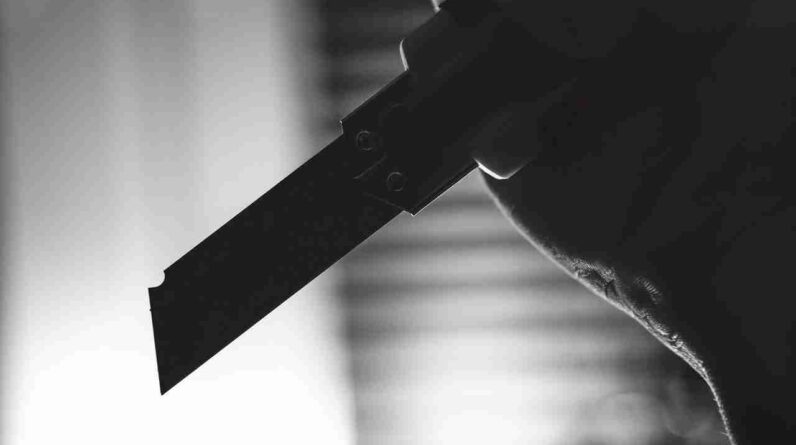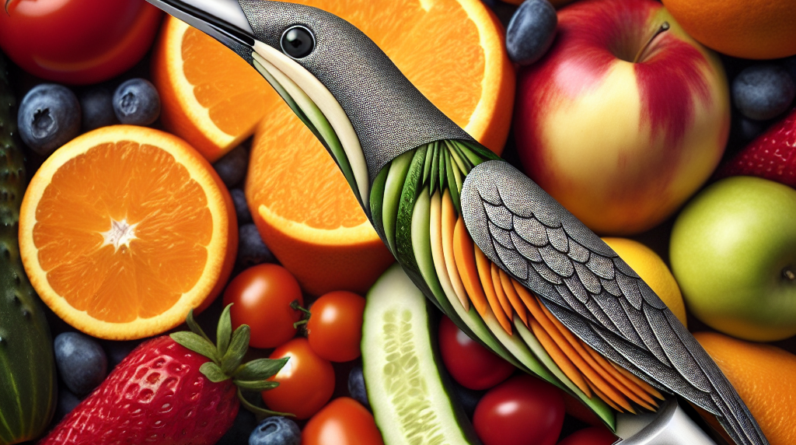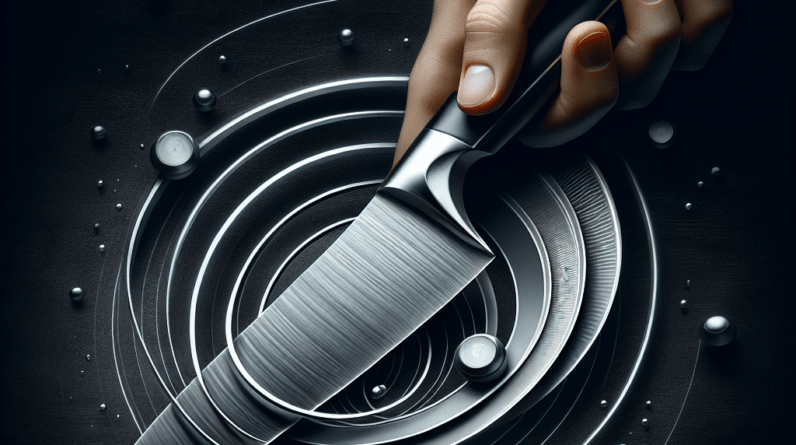In the world of culinary craftsmanship, the choice of knife can make all the difference. As we navigate the vast array of kitchen tools available to us, one question often arises: what sets a Western-style knife apart from its Japanese counterpart? Both styles boast unique qualities, honed over centuries of cultural tradition and expert craftsmanship. By exploring the distinguishing characteristics of each, we can uncover the secrets behind these iconic blades and gain a deeper understanding of the artistry that goes into their creation.
Blade Shape
When it comes to the shape of a knife blade, there are distinct differences between Western-style and Japanese-style knives.
Western-style knife blade shape
Western-style knife blades typically have a curved profile, commonly known as a “belly.” This curvature extends along the length of the blade, allowing for efficient rocking and chopping motions. The curved shape of the Western blade makes it ideal for tasks such as mincing herbs or slicing through thick roasts. This design also provides ample knuckle clearance, making it easier and safer to use for those with larger hands.
Japanese-style knife blade shape
In contrast, Japanese-style knife blades have a straighter profile, known as a “gyuto.” The gyuto blade shape is more suitable for precise, controlled cutting techniques, such as push or pull cuts. The straight edge allows for a cleaner, more focused slicing action, enabling the user to make paper-thin cuts effortlessly. The gyuto style is well-suited for tasks that require precision, like slicing sushi-grade fish or preparing delicate vegetables.
Blade Material
The choice of blade material can greatly impact the performance, durability, and overall quality of a knife.
Western-style knife blade material
Western-style knife blades are commonly made of stainless steel and sometimes include additional alloys or carbon for added strength. The use of stainless steel makes these blades highly corrosion-resistant, easy to clean, and less prone to discoloration. The added carbon content contributes to improved edge retention and enhances the blade’s durability. The combination of these materials allows for a versatile knife that can handle a variety of cutting tasks.
Japanese-style knife blade material
Japanese-style knife blades often utilize high-carbon steel, which provides exceptional sharpness and edge retention. This type of steel is known for its ability to be sharpened to a finer edge, resulting in greater precision and cutting prowess. While high-carbon steel blades may require more attention and care to prevent corrosion, they are highly revered for their ability to achieve a razor-sharp edge that can effortlessly glide through food.

Blade Hardness
The hardness of a knife blade determines how well it can hold its sharp edge and withstand repeated use.
Western-style knife blade hardness
Western-style knife blades tend to have a lower hardness rating on the Rockwell scale, typically ranging from 54 to 58 HRC (Hardness Rockwell C). This moderate hardness allows for easier maintenance and sharpening, as the blade is less prone to chipping. While a slightly softer blade may require more frequent sharpening, it can also be advantageous for tasks that involve heavy-duty cutting or chopping, as it provides increased stability and durability.
Japanese-style knife blade hardness
Japanese-style knife blades, on the other hand, often have a higher hardness rating, ranging from 60 to 65 HRC. This exceptional hardness allows for a razor-sharp edge that can retain its sharpness for extended periods. However, the increased hardness also makes the blade more susceptible to chipping or breaking if not used and cared for properly. Japanese-style knives require more delicate handling, but in return, they offer unparalleled precision and cutting performance.
Blade Bevel
The bevel of a knife blade refers to the angle at which the blade tapers.
Western-style knife blade bevel
Western-style knife blades typically have a symmetrical bevel, meaning that the cutting edge is ground at the same angle on both sides. This design provides a sturdy, robust cutting edge that is less prone to chipping. The symmetrical bevel also makes sharpening easier and more straightforward, as both sides of the blade can be honed evenly. This type of bevel is well-suited for tasks that involve heavy-duty cutting or slicing through tough ingredients.
Japanese-style knife blade bevel
Japanese-style knife blades often feature an asymmetrical bevel, with one side of the blade ground at a steeper angle than the other. This asymmetry allows for a thinner, more acute cutting edge, resulting in increased sharpness and precision. The asymmetrical bevel requires specialized sharpening techniques to maintain the optimal edge geometry. Japanese-style knives excel in tasks that require finesse and delicate slicing, such as preparing sushi or sashimi.

Blade Edge
The edge of a knife blade can greatly affect its cutting performance and versatility.
Western-style knife blade edge
Western-style knife blades commonly feature a double-edge, also known as a “V” edge. This double-beveled edge allows for versatility in both right and left-hand use, making it suitable for a wide range of kitchen tasks. The V-shaped edge provides a good balance of durability and sharpness, making it ideal for all-purpose use, such as chopping, slicing, and dicing. Additionally, the double-edge of a Western-style knife can be sharpened using standard sharpening tools available in most kitchens.
Japanese-style knife blade edge
Japanese-style knife blades typically have a single-edge, known as “hira” or “chisel” grind. This edge design enhances cutting precision and reduces the likelihood of food sticking to the blade. The single-edge allows for incredibly thin and controlled cuts, making it perfect for intricate slicing techniques. However, the single-edge blade requires more specialized sharpening methods, typically utilizing a whetstone. The Japanese-style knife edge is revered for its ability to produce precise and clean cuts, particularly for delicate ingredients.
Blade Thickness
The thickness of a knife blade plays a crucial role in its overall performance and functionality.
Western-style knife blade thickness
Western-style knife blades tend to have a thicker spine compared to Japanese-style blades. This thicker profile provides increased durability and strength, allowing for heavy-duty tasks such as bone-in meat cutting or tough vegetable chopping. The additional thickness also contributes to the weight and balance of the knife, making it easier to control during vigorous cutting motions.
Japanese-style knife blade thickness
Japanese-style knife blades often have a thinner spine, resulting in a lighter and more agile knife. The reduced thickness allows for greater precision and maneuverability, making intricate tasks like vegetable slicing or filleting fish more effortless. However, the thinner blade may be more prone to bending or chipping when used on hard or dense materials. Japanese-style knives are designed for precise, controlled cutting motions, where finesse and delicate handling take precedence over brute force.

Handle Design
The design of a knife handle greatly influences the user’s comfort, grip, and overall control during cutting tasks.
Western-style knife handle design
Western-style knife handles commonly feature a full tang construction, which means the blade extends all the way through the handle. This design provides excellent balance and durability, as the weight is evenly distributed between the blade and the handle. The handle materials for Western-style knives often include various types of wood, plastic, or rubber, offering a comfortable grip and easy maintenance. The ergonomically designed handles cater to larger hands, providing a secure grip and reducing hand fatigue during prolonged use.
Japanese-style knife handle design
Japanese-style knife handles often have a partial tang construction, where the blade extends only partially into the handle. This design allows for a lighter and more nimble knife, resulting in precise control and maneuverability. Traditional Japanese knife handles are typically made from wood, providing a natural and comfortable grip. The handles are ergonomically shaped to fit the palm, enabling precise cutting techniques that require intricate hand movements. However, the smaller size of Japanese-style knife handles may be less suitable for those with larger hands.
Weight and Balance
The weight and balance of a knife significantly impact its performance and ease of use.
Western-style knife weight and balance
Western-style knives are generally heavier due to their thicker blades and full tang construction. The added weight allows for increased leverage and stability, making tasks that require exerting force or cutting through dense ingredients more manageable. The balance point of a Western-style knife is typically positioned towards the bolster or the finger guard, providing a solid feel and control during cutting motions. The weight and balance of Western-style knives make them ideal for tasks that require a more robust cutting approach.
Japanese-style knife weight and balance
Japanese-style knives are renowned for their lightweight and well-balanced nature. The combination of a thinner blade and a partial tang construction results in a knife that feels agile and responsive in hand. The lighter weight allows for precise control and enhanced maneuverability, making Japanese knives effortless to handle during intricate cutting tasks. The balance point of a Japanese knife is often closer to the blade’s midpoint, promoting a nimble cutting motion. The weight and balance of Japanese-style knives make them perfect for culinary techniques that demand delicacy and precision.
Versatility
The versatility of a knife refers to its ability to handle a wide range of cutting tasks with ease.
Western-style knife versatility
Western-style knives are known for their versatility, capable of handling various cooking techniques and ingredients. The curved shape of the blade, along with its durability and sturdiness, allows for efficient chopping, slicing, and dicing. The double-edge and moderate hardness provide a balance between sharpness and durability, making Western-style knives suitable for both delicate and heavy-duty cutting tasks. From peeling and mincing to carving and deboning, Western-style knives can adapt to numerous kitchen scenarios.
Japanese-style knife versatility
While Japanese-style knives excel in specific cutting techniques, their versatility may be more specialized compared to Western-style knives. Their razor-sharp edge and precision make them perfect for intricate slicing, such as filleting fish or thinly slicing vegetables. Japanese knives are particularly well-suited for tasks that require precision and finesse, like creating sashimi or sushi. However, the thinner blade and sharper edge may be less ideal for tasks that involve heavy force or repeated heavy chopping.
Price
The price of a knife is determined by various factors, including the materials, craftsmanship, and brand reputation.
Western-style knife price
Western-style knives are available at a wide range of price points, catering to different budgets and needs. From entry-level options made from stainless steel to high-end knives with superior construction and premium materials, there is a Western-style knife for every price range. The price range for Western-style knives reflects the diverse market demand and the availability of different features and qualities.
Japanese-style knife price
Japanese-style knives, especially those crafted by renowned craftsmen and made from high-quality materials, can be more expensive compared to Western-style knives. The artistry and craftsmanship inherent in Japanese knife-making, combined with the use of traditional materials and techniques, contribute to the higher cost. Additionally, the specialized sharpening, finishing, and attention to detail in Japanese knife production further justify their premium price. Japanese-style knives are an investment for those who appreciate the meticulous craftsmanship and unparalleled cutting performance they offer.
In conclusion, the differences between Western-style and Japanese-style knives extend beyond aesthetics. From blade shape and material to hardness and balance, each style presents its unique advantages and considerations. Choosing between Western-style or Japanese-style knives ultimately boils down to personal preference and the specific culinary tasks one performs. Whether it’s the heft and versatility of a Western-style knife or the precision and finesse of a Japanese-style knife, having a well-curated collection of both can enhance any cooking experience and cater to a wide array of culinary adventures.









